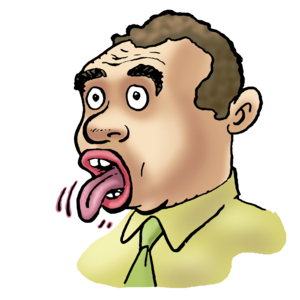Timeless Awareness

“Organismic awareness is what we, on the Ego Level ordinarily, but clumsily, refer to as seeing, touching, tasting, smelling and hearing. But in its very purest form, this “sensual awareness” is non-symbolic, non-conceptual, momentary consciousness. Organismic awareness is awareness of the Present only you can’t taste the past, smell the past, see the past, touch the past, or hear the past. Neither can you taste, smell, see, touch or hear the future. In other words, organismic consciousness is properly timeless, and being timeless, it is essentially spaceless. Just as organismic awareness knows no past or future, it knows no inside or outside, no self or other. Thus pure organismic consciousness participates fully in the nondual awareness called Absolute Subjectivity.”
–Ken Wilber (American Philosopher, 1949-)
Human Taste Perception

It is remarkable that we still know so little about one of our most important senses: taste. Despite the significance of taste to survival and gratification much of what is written in basic books is outdated and we have only a rudimentary understanding of how our taste buds operate and how their sensations are translated into comprehensible sensations.
Taste provides both us with pleasure and protection: we use taste to evaluate everything that we put in our mouths. Taste mediates recognition of a substance and the final decision process before it is either swallowed and taken into the body, or rejected.
A new primer written by scientists at the Monell Center in Philadelphia and Florida State University is published in today’s issue of Current Biology. It provides a clear and accessible overview of recent advances in understanding human taste perception and its underlying biology.
Within the past few years, identification of receptors for sweet, bitter and umami (savory) taste has led to new insights regarding how taste functions. The Current Biology primer reviews the current state of knowledge regarding how taste stimuli are detected and ultimately translated by the nervous system into the perceptual experiences of sweet, sour, salty, bitter, and umami.
These perceptual evaluations are related to the function and the consequences of taste evaluation. These can range from pleasurable emotional reactions to the critical life-dependent response that causes a person to spit out a bitter potential toxin.
Paul Breslin, a sensory scientist at the Monell Center, had this to say,
“For all mammals, the collective influence of taste over a lifetime has a huge impact on pleasure, health, well being, and disease. Taste’s importance to our daily lives is self-evident in its metaphors – for example: the ‘sweetness’ of welcoming a newborn child, the ‘bitterness’ of defeat, the ‘souring’ of a relationship, and describing a truly good human as the ‘salt’ of the earth.”
Curing Chronic Pain: Its All Done with Mirrors

There is a fascinating new approach to treating chronic pain.
The story goes back two years, to the publication of important research from a team at the Royal National Hospital for Rheumatic Diseases, in Bath in England. They wrote a paper in which they tried to link joint pain in neurological conditions. They wanted to see how the pain of rheumatoid arthritis, fibromyalgia and complex regional pain syndrome might relate to phantom limb pain (PLP) experienced by many amputees.
They suggested that in each condition there is reorganization in the sensory regions of the cerebral cortex. And it is this reorganization that generates pain and an altered body image. It seems to be just the same in rheumatology patients as has previously been hypothesized for amputees with PLP; that is a motor/sensory conflict. The body and the sense don’t match and it hurts. Their initial research indicated that something incredibly simple: using a mirror could help people correct of this conflict. They were able to show that a mismatch between motor output and sensory input creates sensory disturbances, including pain, in rheumatology patients and also in healthy volunteers.
In a second paper the investigators were able to show that doing a movement while looking at a distorting mirror could quickly induce uncomfortable symptoms in fit healthy people.
For over two decades, David Blake – the senior author of this research – has championed the idea that there is an important neurological component in inflammatory arthritis. It all started with a simple observation that has puzzled generations of clinicians: why is it that joint involvement in inflammatory arthritis is so often symmetrical? It isn’t surprising if both hips get arthritis: they will likely both have been subjected to a lot of wear and tear. But why should arthritis involve the second joint of the index finger in both hands? It has always looked as if this might imply some neurological contribution.
The idea is that although pain may have originated in inflamed joints, it is maintained and exacerbated by the nervous system. This fits with a fact that has been known to acupuncturists for centuries and has been replicated in pain clinics around the world. If you can interrupt what we call the pain cycle – constant chronic pain that feeds on itself and gets progressively worse – then you may often see pain relief for weeks or months, or sometimes even indefinitely. It is quite common for chronic pain to have had a clear physical precipitant, but to be maintained by key regions in the brain.
This new research strongly supports these observations, implies that the successful treatment of chronic rheumatological pain may involve a neurological approach, and offers a brand new therapeutic option.
“The speaker is only a mirror. Where you can see yourself. When you recognize yourself clearly, you can put aside the mirror.”–Jiddu Krishnamurti (Indian Spiritual Teacher, 1895-1986)
“Perception is but a mirror, not a fact. What I look on is my state of mind reflected outward.”–A Course in Miracles






